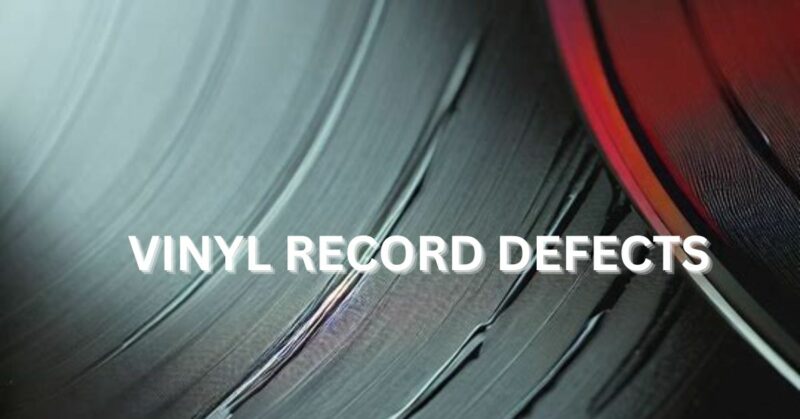Vinyl records have experienced a resurgence in popularity, but they are not immune to defects. This article will explore common vinyl record defects, their causes, how to identify them, and possible solutions to mitigate the issues.
Surface Scratches
Surface scratches are one of the most common defects encountered in vinyl records. They occur due to mishandling or improper storage. Scratches can cause skips, pops, and distortion during playback. To identify surface scratches, inspect the record under a strong light source, looking for visible marks. Prevention is crucial; handle records with care and store them in protective sleeves. Repair options are limited, but professional cleaning and resurfacing services may help salvage moderately damaged records.
Warping
Warping is a deformity that causes the vinyl record to bend or curve. It can occur due to exposure to heat, direct sunlight, or poor storage conditions. Warped records produce uneven playback and may be impossible to play in extreme cases. To check for warping, visually inspect the record on a flat surface, looking for noticeable bends or curves. Prevention involves storing records upright in a cool, dry place away from heat sources. Repairing warped records is challenging, but gentle heat application and professional flattening services may offer some solutions.
Groove Wear
Groove wear is a common defect caused by prolonged use or poor turntable maintenance. It results in a gradual erosion of the grooves, leading to reduced sound quality and increased surface noise. Detecting groove wear requires a keen ear, as it often manifests as a general degradation of sound. Prevention includes proper turntable setup, regular stylus cleaning, and proper tracking force adjustment. Unfortunately, groove wear is irreversible, but using high-quality cartridges and styluses can minimize the issue.
Clicks and Pops
Clicks and pops are disruptive noises that occur during playback and can ruin the listening experience. They can be caused by various factors, including dust, dirt, static electricity, or manufacturing defects. To identify the source, visually inspect the record for visible debris or contaminants. Prevention involves cleaning records thoroughly before playing and using anti-static devices. Cleaning solutions, record brushes, and carbon fiber brushes are useful tools. Additionally, investing in high-quality pressings can reduce the occurrence of clicks and pops.
Off-Center Pressing
Off-center pressing occurs when the spindle hole of a record is not centered properly during the manufacturing process. This defect results in uneven rotation, causing pitch variations and sound distortion. To detect off-center pressing, listen carefully for pitch fluctuations during playback. Unfortunately, this defect cannot be repaired. However, exchanging the record for a properly centered pressing or seeking a refund is advised. Buying records from reputable sources can help minimize the chances of encountering off-center pressings.
Vinyl record defects can be frustrating, but understanding their causes, identifying the issues, and taking preventive measures can mitigate the impact. By handling records carefully, implementing proper storage techniques, and investing in high-quality pressings, vinyl enthusiasts can enjoy a superior listening experience and prolong the lifespan of their cherished record collections.

